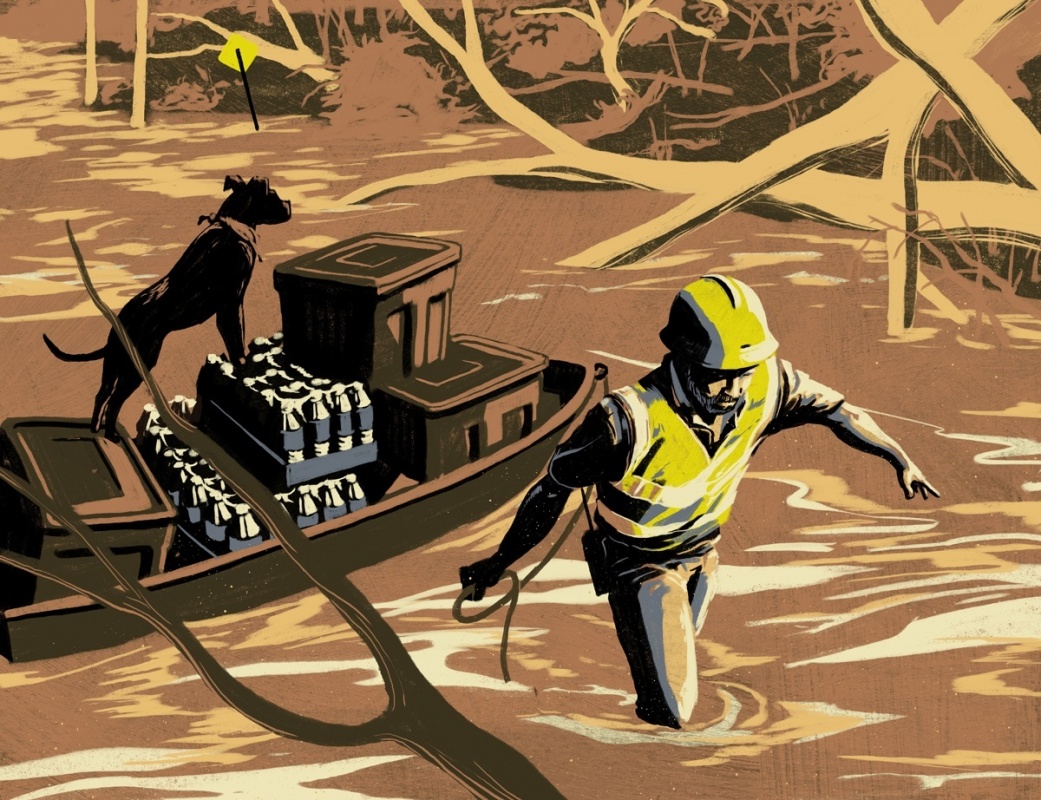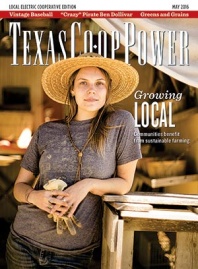The everyday rhythm of life swerved then halted when historic floods slammed the Texas Hill Country in late May 2015. Along the Blanco and San Marcos rivers, catastrophic flooding killed 14 people and destroyed property in Blanco, San Marcos and Wimberley. Heavy rains also affected Bastrop, Caldwell, Travis and Williamson counties.
In Blanco, the rains started after midday on Saturday, May 23. It was Memorial Day weekend. Before dark, the Blanco River—by nature calm and slow-moving in its eastward course through town—raged high beyond its banks, surging into houses and demolishing nearly everything in its path.
By 9 p.m., the Red Cross opened an emergency shelter at the Gem of the Hills Community Center north of town. Volunteers provided cots and meals for residents evacuated from their homes and travelers unable to navigate flooded roads. The National Guard rescued stranded visitors from a riverside campground, and at Blanco State Park, Superintendent Ethan Belicek directed five dozen campers to higher ground and safety at his family’s residence.
“Pray for Blanco,” one resident posted on Facebook late that night.
The next morning, daylight revealed the flood’s heartbreaking devastation: trees and other vegetation mowed over by the muddy Blanco River, which was still running high but no longer at flood stage. Washed-out windows on homes and buildings overlooking the river hinted at the terror of the night before. Days passed before reports confirmed damaged homes outside of town.
East of town, massive pieces of the concrete bridge on Ranch Road 165 lay in the river. Debris atop another river crossing in town blocked traffic. Miraculously, the city’s major river bridge on U.S. 281/Main Street remained intact and never closed.
At City Hall, Mayor Bruce Peele (in office just shy of two weeks) met with staff. A block from downtown, first responders with their heavy equipment established headquarters at the Blanco Volunteer Fire Department. Down the street, volunteers at the Blanco Good Samaritan Center, a food pantry and nonprofit thrift store, gave out food and clothing to the first of many flood victims. Volunteers at Gem of the Hills organized shifts to cook and feed first responders and stranded survivors. Donations of clothing, bottled water, cleaning supplies and food poured into the city.
“After church that Sunday morning, my wife and I went home to start cleaning up our own property,” says Blanco resident David Park, whose home was not damaged. “At that point, I didn’t fully realize the gravity of what had happened.”
Residents including Park paused their personal lives and banded together to operate the Blanco Flood Relief Center. Bolstered by city and county officials, a core of volunteer leaders, including military retirees, drew up an action plan. They identified tasks such as construction, data entry, coordination of volunteers and allocation of funds, and they appointed task directors.
“One of the first things we had to do was mud out homes,” says Park, who agreed to serve as relief center director. “It was grim. The houses were health hazards.”
Meanwhile, the Blanco County Disaster Relief Fund collected donations amount-ing to more than $228,000. All told, the account funded projects on more than 150 properties. More than 500 local and regional volunteers restored nearly 60 homes, not to mention mending damaged fences and roads and removing debris. Church-affiliated groups from across the state (and as far away as Germany) sent workers.
Local cooperatives also contributed to Blanco’s relief efforts. The floods affected every district in Pedernales Electric Cooperative’s 8,100-square-mile territory, including some of the worst-damaged areas along the Blanco River. PEC crews and contractors worked around the clock to clear debris, replace downed utility poles and restore power. In one case, they attained a property owner’s permission to clear and reinforce a road on his land so crews and residents could access an area cut off by flooding. By May 25, PEC had restored power to 508 members in Blanco; remaining outages were restored by the early morning of May 28.
“Throughout the disaster and after, our employees reached out to support those affected,” says Jeanette Horn, PEC’s communications editor. “The bulldozers that PEC contracted were used to pull several vehicles from the mud, and employees handed out bottled water. As the cleanup began, staff volunteered to help and also took up collections of money, food and household items for flood victims.”
Likewise, employees with GVTC Communications (formerly Guadalupe Valley Telephone Cooperative) collected cleaning supplies for distribution to flood victims. Free of charge, the cooperative also provided the Blanco Flood Relief Center with two dedicated telephone lines, as well as a high-speed Internet connection.
By mid-September, volunteers had completed much of the rebuilding in Blanco, and most displaced residents were back in their homes. On October 9, the Blanco Flood Relief Center officially closed and transferred relief support to the Blanco River Regional Recovery Team, a nonprofit organization established to meet the long-term recovery needs of flood victims in Blanco, Caldwell, Guadalupe and Hays counties.
Debie and Bill Knight, who live along the Blanco River in Blanco, worked with the relief center team to rebuild their destroyed home. “We are sleeping in our house tonight for the first time since the flood,” Debie Knight posted on Facebook on September 12. “We are so blessed to live in this caring community.”
Nearly one year later, the mayor is still amazed by how the Blanco community came together to rebuild. “If we hadn’t had the outpouring of help, then we’d still be stuck in the mire,” Peele says. “A disaster always seems to bring out the best in people.”
——————–
Sheryl Smith-Rodgers, a member of Pedernales EC, lives in Blanco.


